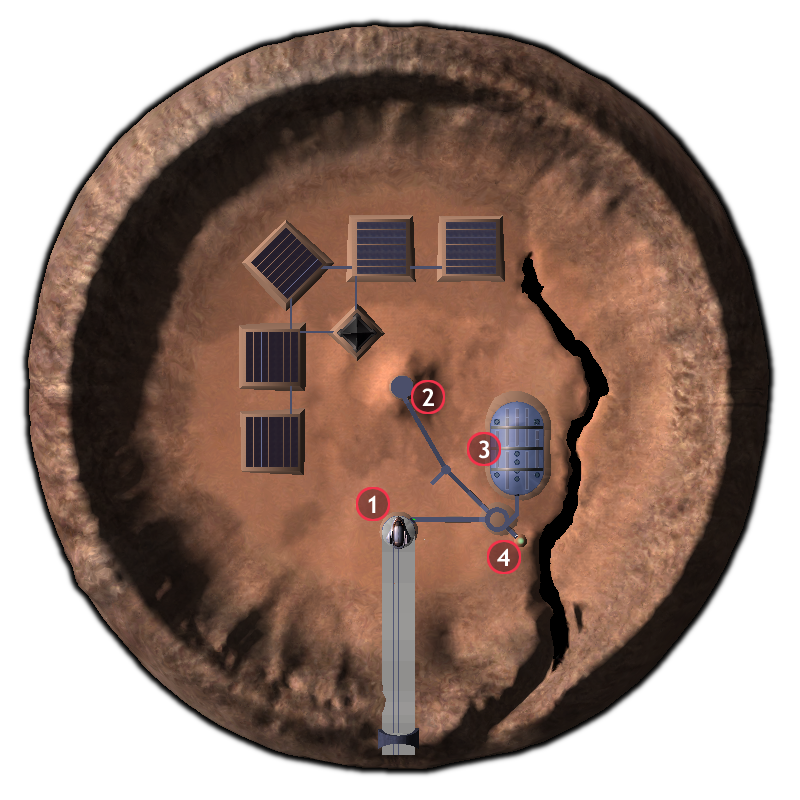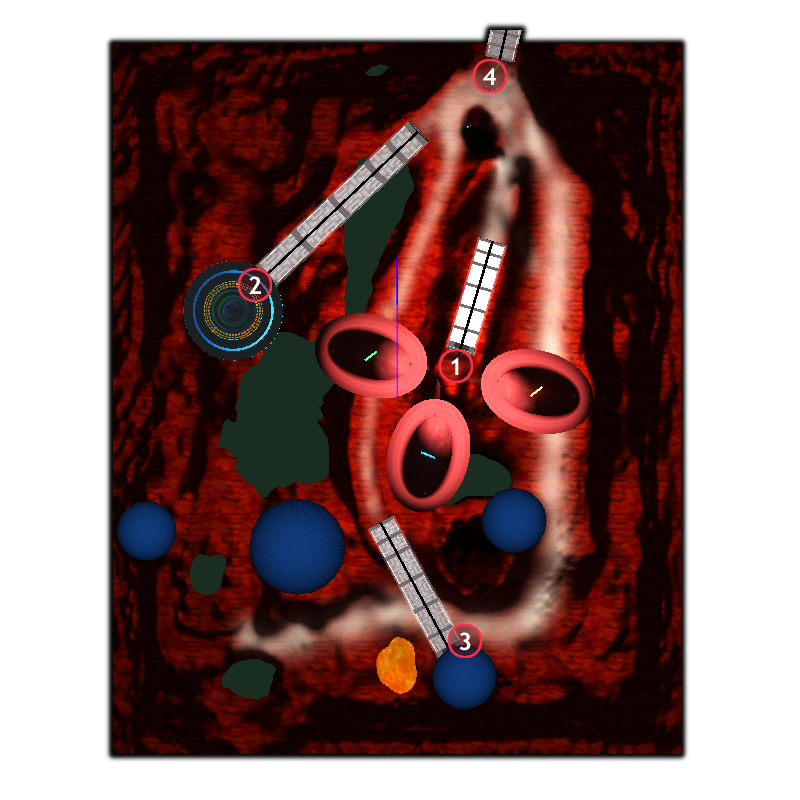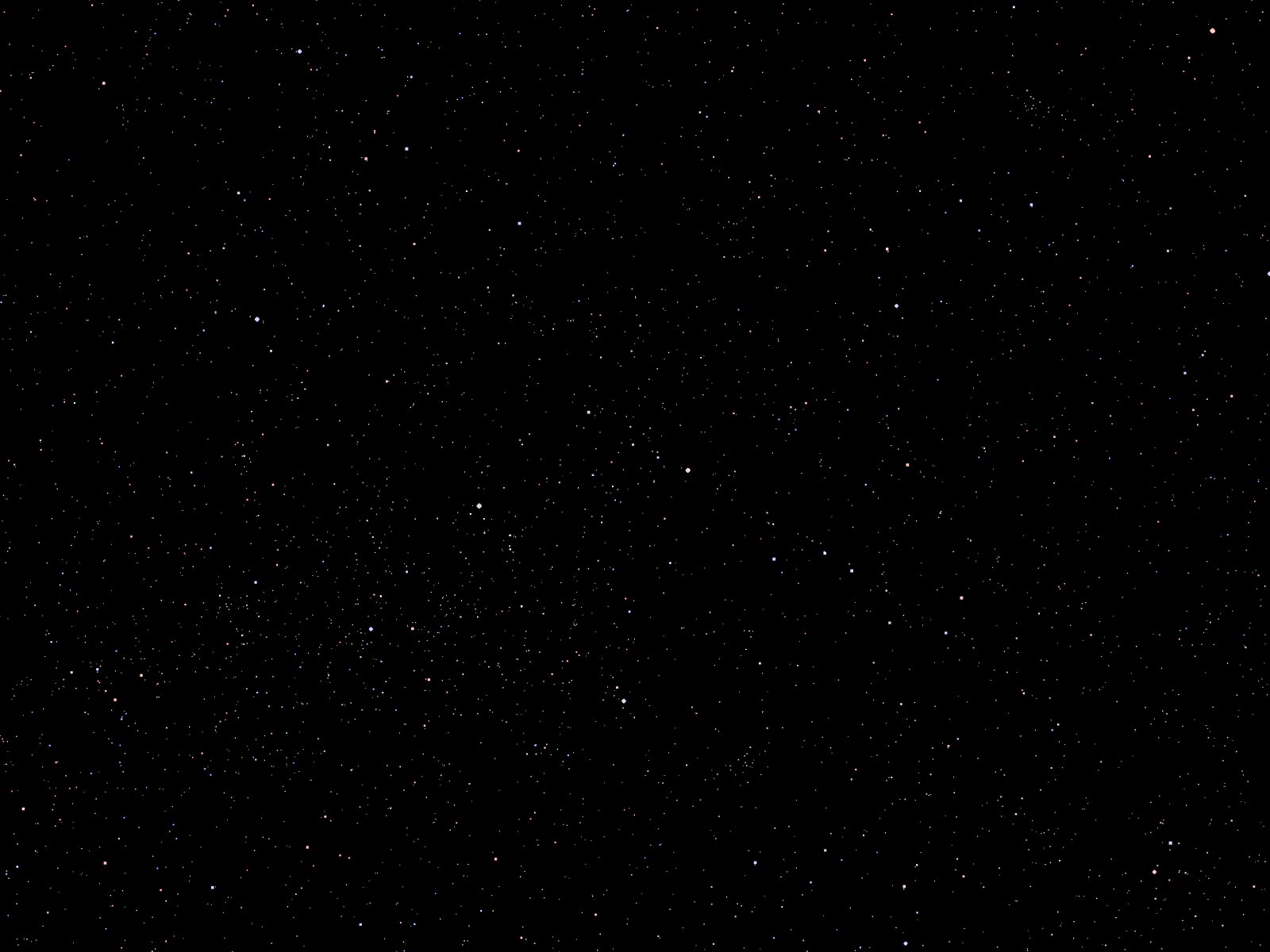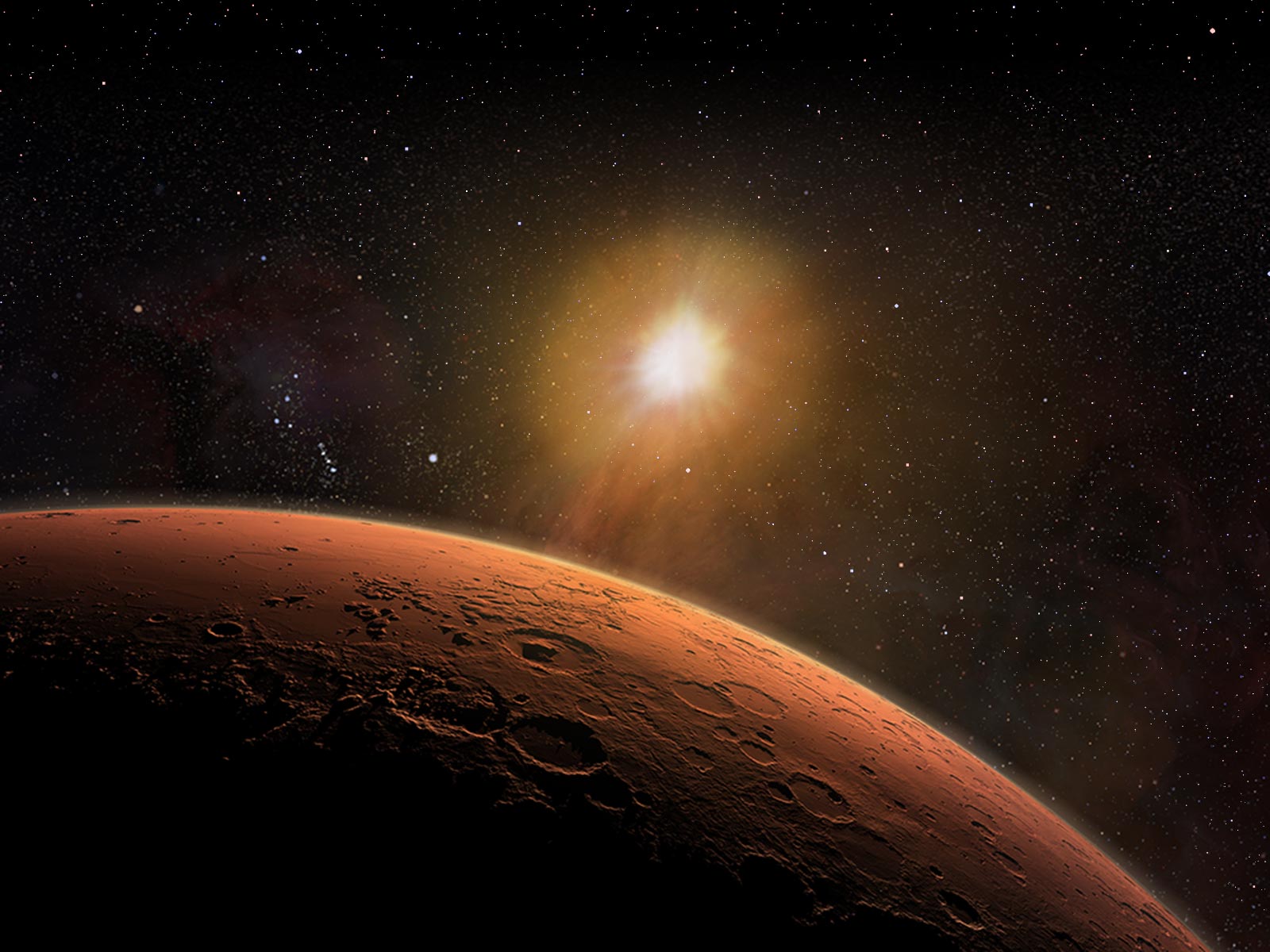Maps of the Mars Colony
Impact Basin Surface Colony (top) and Underground Colony (below)
 Impact Basin Surface Colony
Impact Basin Surface Colony
- Shuttle Landing Pad :
The shuttle to and from Earth lands outside the crater, and then descends a ramp to the basin. The rails and tow-guides on the ramp can also help draw the ship up and out for an accelerated escape in event of emergency evacuation.
- Observatory Hill :
This naturally-occuring central peak in the impact basin was originally intended for development into a communications array; however, newer technologies have eliminated the need for large dishes at this location. The crater-spanning dome, while a vast improvement on the issue of radiation shielding, would also interfere with such communication devices, so they have been placed outside the dome on the upper surface. The hilltop now remains largely empty, and is popular as a lookout point.
- Greenhouse Dome :
Every colonist is required to contribute to the greenhouse growing and maintenance operations. The plants housed therein, from great fruit-bearing trees down to algae ponds, serve as both food and oxygen sources.
- Tunnel to Underground Colony :
Here, colonists can take an elevator down to the underground colony structures.
Not part of the original Surface Colony plan, late developments in hybrid-polymers and radiation shielding -- combined with advanced automated nano-constructors -- have allowed the crater to be effectively sealed by a single great dome. A comfortably-pressurized, breathable -- if still a little chilly -- environment can be maintained on the surface, without requiring the colonists to wear bulky suits or breathing masks.
Also on the surface are a number of solar-power collection arrays, along with a central power station. These areas are for authorized technicians only.
 Underground Colony
Underground Colony
- Living Quarters :
Thanks to the great cavernous area formed by the surface impact and fault opening, colonists can enjoy unusually spacious rooms. Even students in the University of Mars each have access to a large dorm of their own. Plans for future development of the colony and additional colonists from Earth may later shrink the space allocation per individual colonist, unless more volume can be bored out of the Martian subsurface, or more construction occurs on the surface.
- Virtual Reality Laboratory :
Virtual-Reality technology advanced considerably throughout the early-to-middle 21st century, eventually allowing room-sized spaces for immersive experiences. Easily the single-most-popular facility in the colony, the V.R. Lab affords colonists everything from a place to conduct science experiments without using limited physical resources, a learning and entertainment center, to a way to re-visit favorite sights from Earth and view recorded holographic messages from distant friends and family.
- Water Treatment Facility :
Deep in the fault opened by the great meteorite impact is a large mass of water ice. Colonists tap this underground water source for many uses, not least of which is life support.
- Tunnel to Surface Colony :
Here, colonists can take an elevator up to the surface colony area.
Other underground features include a few small melt ponds around the living quarters, as well as an exposed molten mineral extraction area (powered in part by waste heat from the Water Treatment Facility) that doubles as a large area heater for the entire underground. Swimming in the ponds is officially discouraged, although that has historically not prevented many colonists from taking a recreational dip now and then. Fortunately, no colonist has accidentally strayed towards the molten-metal reservoir; even those half-asleep turn away at the immense heat near the pool.
See also:



 U.Mars — Encyclopedia
U.Mars — Encyclopedia
 Impact Basin Surface Colony
Impact Basin Surface Colony
 Underground Colony
Underground Colony